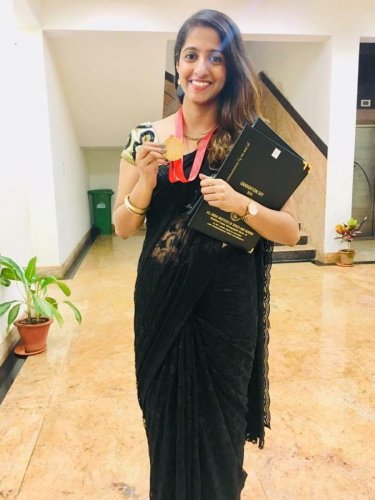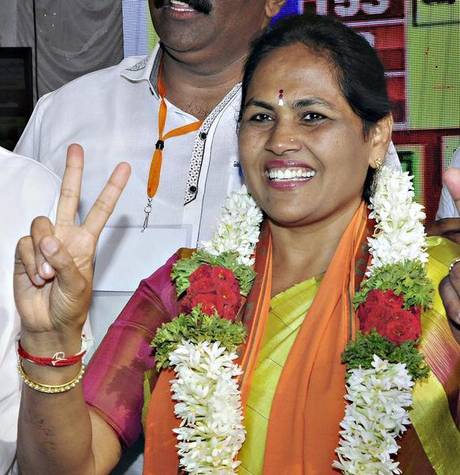Putting to rest all doubts and criticism, a team led by Prof. Anshu Pandey from the Indian Institute of Science (IISc), Bengaluru confirms that their material exhibits major properties of superconductivity at ambient temperature and pressure. A material is said to be a superconductor if it conducts electricity with nil resistance to the flow of electrons. Superconductors will help build very high efficient devices leading to huge energy savings. Till now, scientists have been able to make materials superconduct only at temperatures much below zero degree C and hence making practical utility very difficult.
Superconductivity at ambient temperature has been a holy grail in physics for about a century. This is where IISc’s work becomes particularly important. A revised article has been posted on May 21 in arXiv, a pre-print repository.
The material that exhibited superconductivity is in the form of nanosized films and pellets made of silver nanoparticles embedded in a gold matrix. Interestingly, silver and gold independently do not exhibit superconductivity.
The team examined 125 samples, of which 10 showed a drop in resistance signaling the onset of superconductivity. They attribute the unsuccessful results in the remaining 115 samples to oxygen exposure at the time of sample preparation and when the samples were taken for study.
“If this [result] is correct, it would be the greatest work done in India since the discovery of Raman effect,” says Prof. T.V Ramakrishnan, leading condensed matter physicist who is a distinguished Associate with the Department of Physics at IISc. “The material they have made is unbelievable — a tiny sphere of gold, placed 10-20 tinier spheres of silver inside it…This [material] they found shows a sharp drop in resistivity [reflecting superconducting state]. This is potentially amazing,” he adds.
Identical noise
The initial version posted in the repository on July 23, 2018 by a two-member team of Prof. Anshu Pandey and Dev Kumar Thapa attracted criticism, raising doubts about the data and hence the study. The reason: the presence of identical pattern of noise for two presumably independent measurements of the magnetic susceptibility. Noise, by its very virtue, will be random and so finding nearly identical noise in measurements made under different conditions is highly improbable. Dr. Brian Skinner, a physicist at the Massachusetts Institute of Technology, Boston was the first to notice this.
In one of his tweets in August 2018 Dr. Skinner said: “…They [IISc team] are really not backing down from their claims. They emphasize that they are focused on providing validation of their data…” And that is precisely what the IISc team has now done — provide validation of their data. On May 22, 2019, Dr. Skinner tweeted “…I am gratified, to say that least, that it is a scientific story now, and not a story about social scandal.”
Interestingly, the plots of magnetic susceptibility versus temperature in the new data still show the repeated “noise” in some instances. However, the researchers have clarified that the magnitude of the noise is well above instrumental resolution. “This suggests a possible physical origin related to the sample as opposed to instrument artefacts,” they write.
Referring to the “noise”, Prof. Arindam Ghosh from the Department of Physics at IISc and a co-author of the revised article says: “This is the data that we got. Further studies have to be done to understand this.”
The proof
“Two of the most important properties of superconductivity are dimagnetism and zero resistance. These two were seen in the material we studied. They seem to suggest that the material becomes superconducting below a certain temperature (286 K or 13°C). And it can go up to 70°C,” says Prof. Ghosh.
“At 286 K we have seen clear transition from a normal state to a superconducting state. This is more than anyone has reported,” Prof. Ghosh adds.
The revised version has provided the recipe for preparing the material, which was not included in the version post in July last year. The revised version also has plenty of data on the calibration of the setup. Besides retesting superconductivity, the authors tested it on another superconducting metal — lead. “[Unlike in the case of the original material] we did not see repeated noise,” Prof. Ghosh clarifies.
Researchers critically evaluating the revised version have raised some concerns. Prof. Pratap Raychaudhuri from the Superconductivity Lab at Tata Institute of Fundamental Research (TIFR) Mumbai has raised concerns that while the drop in mutual inductance is fairly sharp, it is at a lower temperature compared with resistance. “In superconductivity when the resistance goes to zero the diamagnetic drop should coincide with resistance drop. Here the resistance drops to zero at 175 K but the diamagnetic drop is at 165 K. This kind of difference [between resistance and diamagnetic drop] is unusual,” say Prof. Raychaudhuri.
Responding to Prof. Raychaudhuri’s observation on the sharpness of fall in mutual inductance Ghosh says: “We think there is long penetration depth (the depth to which the magnetic field penetrates inside the material) and so the change in mutual inductance can be very small.”
And about different temperature at which diamagnetic drops and resistance goes to zero, Prof. Ghosh explains: “We don’t have full clarity on this but there have organic superconductors where such discrepancies have been seen before.”
Soon after Dr. Skinner raised a red flag, there was criticism that authors were not sharing the samples with their peers for evaluation. “Our samples are extremely sensitive to environment. Samples degrade very rapidly and so measurements have to be made immediately after sample preparation,” Prof. Ghosh says, explaining why samples could not be shared with others. “We have now found a way of protecting the samples for a long time, which allowed us to do measurements over the last few months. Once we develop a protocol for better protection then we will be engaging and collaborating with other groups in India and abroad.”
Prof. G. Baskaran, a SERB Distinguished Fellow at The Institute of Mathematical Sciences, who works on the theory of superconductivity, was quick to provide a theory soon after the preprint was posted in 2018. In his theory, monovalent character of silver and gold and repulsion among electrons could produce room temperature superconductivity under certain restrictive conditions. Prof. Baskaran is excited that the Thapa-Pandey system precisely provides such conditions. “This looks like a case where granular superconductors play a role. I am excited that the key first step in this challenging field has been brought about by a systematic and detailed effort.”
The manuscript has been sent to a journal for publication and the first level of reviewing by editors has been completed. It is currently undergoing technical review by peer-reviewers. “We hope it will be published soon,” Prof. Ghosh says.
source: http://www.thehindu.com / The Hindu / Home> Sci-Tech> Science / by R. Prasad & Shubashree Desikan / May 25th, 2019








